Monday, May 11, 2015
Game Report: LOTR Strategy Battle Game
Last week the club gave Games Workshop's "Lord of the Rings Strategy Battle Game" (LoTR SBG) a try. It's a game I've been obsessing over for some time, so it was nice to finally give it a go. Of course, being CSW, we weren't about to go out and buy a bunch of $80 rulebooks. Luckily, the "Return of the King" (ROTK) rulebook is commonly available online for $4-$9 shipped! To entice participation, I purchased a copy of the rulebook for every member of the club. (Editor's note: Wow!)
The ROTK rules are the third update to the game. Starting in 2001 there was a rulebook released for each film, followed by a fourth large hardcover version -- sometimes known as the "One Rulebook" -- and finally the current fifth edition, which was released for Hobbit films.
From what I've been able to deduce, the ROTK core rules are nearly identical to the 4th edition, which were themselves mostly unchanged in 5th edition. The book has a wide range of unit profiles and over a dozen scenarios, as well as rules for all manner of infantry, cavalry, weapons, heroes and more. It seems to be lacking rules for war engines and other specialized units that were released in various supplements before being collected in the fourth edition "One Rulebook."
I think ROTK is an excellent way to try the basic game rules at minimal cost. You can always decide later whether to buy a more current rulebook. Alternatively, a group could just stick with the ROTK rules, since the game doesn't have a massive player base anymore since Games Workshop doubled the cost of most miniatures, allowed many essential army books to go out of print, and generally neglected development of the game. Lastly, anyone interested in fantasy wargaming should consider ROTK as an affordable chance to read over a lovely (like all GW publications) rulebook containing a nicely developed ruleset by two of wargaming's best known authors, Rick Priestley and Alessio Cavatore.
The Scenario
We played the "Long Night" scenario from the ROTK book. It's basically a holdout scenario where a group of good guys attempts to fend off repeated attacks from an enemy who begins the game with less forces, but whose dead soldiers will automatically re-enter the game edge on the next turn.
You can see the layout above. For the purposes of the report, the fence with the gateway will be referred to as the "north", with the other fence sections being "east", "south" and "west" respectively. Since our table is narrower than the recommended 4 feet, two of the four enemy deployment zones were at the corners rather than the edges. As this was our first try of the rules, to simplify play, each of four players were given between 150 and 200 points to spend, but not allowed any heroes or mounted units. Mike and Terrence players played the Uruk Hai, represented by Celtos orc miniatures based in grey.
Tim and I played the Men of Rohan defenders, represented by Celt miniatures with tan basing. The minis were played WYSIWYG except that Celts with slings were counted as having bows.
Special thanks to Tim for providing both forces, giving us far more representative Middle-Earth-style figures than would have been the case if I'd provided proxies.
The Battle
The first turn was uneventful, with the Uruk Hai advancing on the village. On the west and south sides they split into two groups.
And on the other end of the village they advanced en-masse towards the east wall.
Meanwhile the Men of Rohan scarcely moved and only managed to send off a few ineffective arrows in the Uruks' direction.
In the second turn, the forces came to blows.
A couple of Uruks were slain and the Rohan line held with no casualties.
In the third turn, the first Rohan fighter fell, and a couple of Uruks managed to make it over the walls before being cut down.
Through all this, the Uruks had still not attempted to take the north wall, which was the only section with an open portal and the longest and likely hardest to defend portion of the defenses.
In the fifth turn, the Uruks began to realize that the defenders would not be defeated so easily, and they began to employ a bit more strategy.
Despite the chance of hitting their own men, their archers began firing into the melee, creating openings to be exploited by the following troops.
Though not crippled, the Rohan force was beginning to show some signs of weariness as the defenders began to dwindle and more and more Uruks assaulted the wall.
As reinforcements arrived, the Uruks began to send troops towards the north wall, though most of the battle remained at the other three corners until the sixth turn.
In the sixth turn, the Uruks made a strong push for the north wall and finally managed to establish a strong foothold inside the Rohan defenses.
We played one additional turn, but at this point it became fairly obvious that the Men of Rohan would not be able to hold out for what the scenario rules suggest would be 20 turns. Time was growing late, so we called the game.
Thoughts on the Rules
The players' responses to the game were mixed. I really enjoyed it, Tim was not impressed at all and Terrence and Mike were not convinced either way, but said they'd be willing to try the game with the inclusion of Heroes (the game's designation for all units that can make use of the additional characteristics of "Might, Will and Fate").
LOTR is an interesting approach for a fantasy game. I'm not sure I know of any other game that attempts to put a platoon or more (20 to 50 figures) in the hands of each player and ask them to control each one miniature individually.
To make such a game function, the combat is extremely streamlined. There is an opposed roll to see who wins and a roll to see if one is wounded. Neither of these rolls seems to ever be modified, and there are no saving throws. This is a stark contrast to nearly every other GW game I've played, but it definitely fits the aim of the rules. The rules emphasize clever use of maneuver and terrain to allow your soldiers to most advantageously engage the enemy.
Though we didn't get too deep into them, the rules for weapons also add to the gameplay without adding complexity. Shields, spears and bows (among others) all have unique effects on combat, which is something lacking in games such as Song of Blades & Heroes.
Without Heroes, however, the game does feel a bit samey and dry. I suspect that they are the necessary flavor to make this a game worth revisiting. A couple heroes with relatively high point values would also help keep the game board from being completely crowded with low-point-value line troops. The recommended points values for this game were 200-250 per player, but line troops range from 6-10 points each. Without Heroes, that's a lot of individual minis for each player to command.
To sum up, I'm looking forward to playing this game again. Reading through the rulebook, it's packed with interesting scenarios that beg to be played. But because it's fairly rooted in the Middle-Earth world, this rulebook might not have what it takes to become a mainstay of the club. It has potential, and this first game has made me want to see more of it. So much so that between the game and the writing of this report I've built and painted 20 sections of fieldstone walls (post coming soon...) since the game seems to require a decent amount of barrier-type terrain.
If you have any advice regarding getting started with LOTR rules, notable experiences with them, or opinions on the current status of the game, I'd love to hear them.
-- Karl, Chicago Skirmish Wargames club member

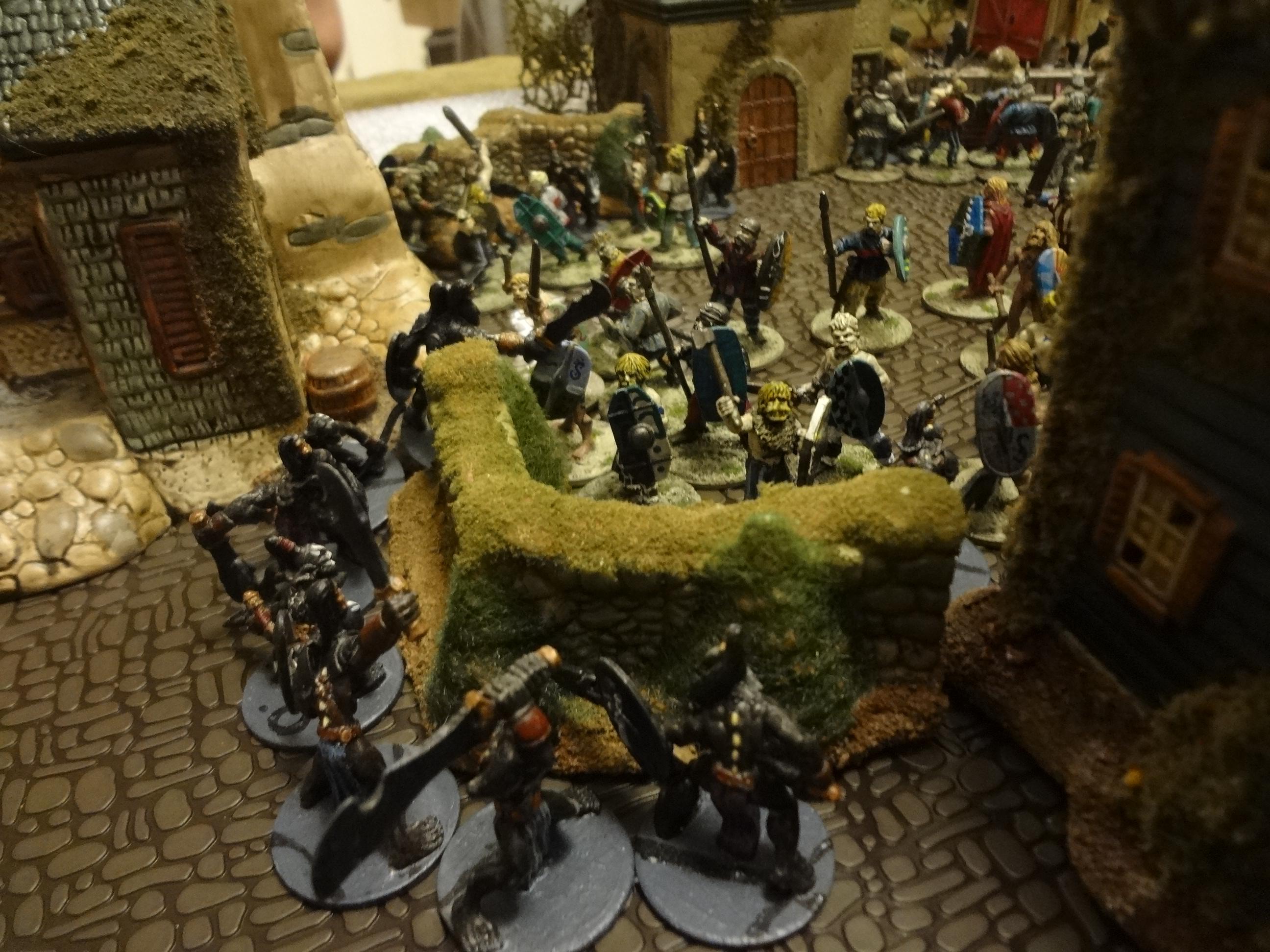
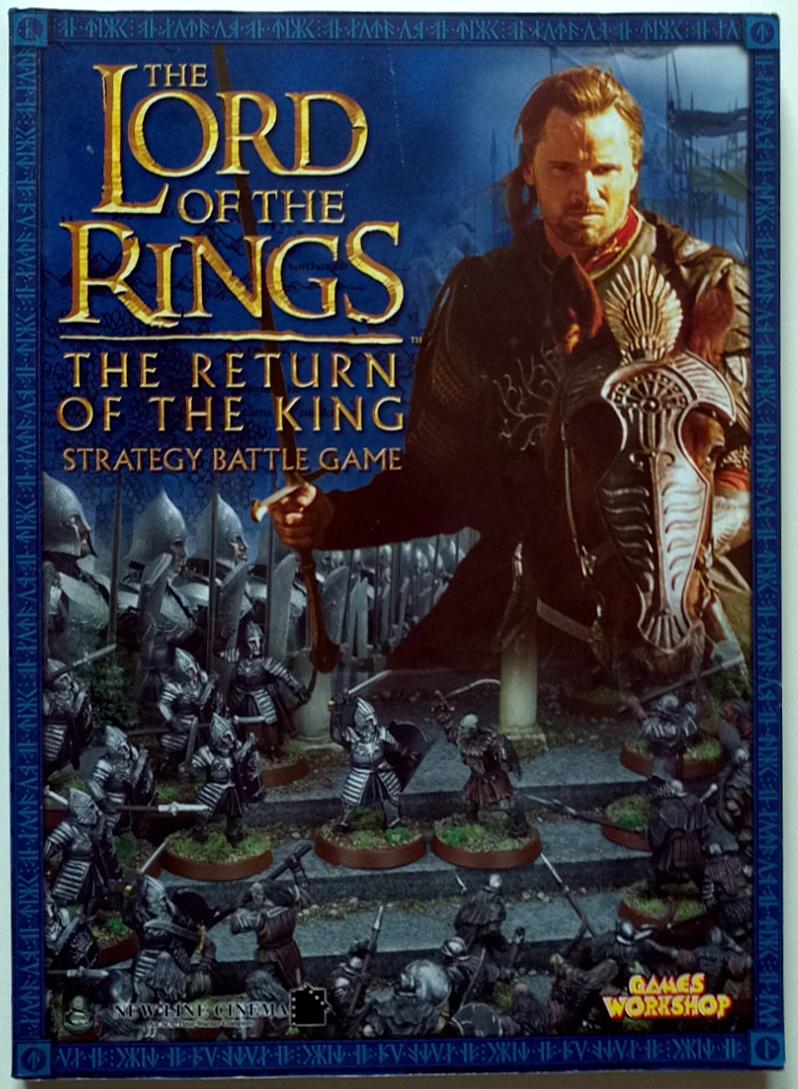
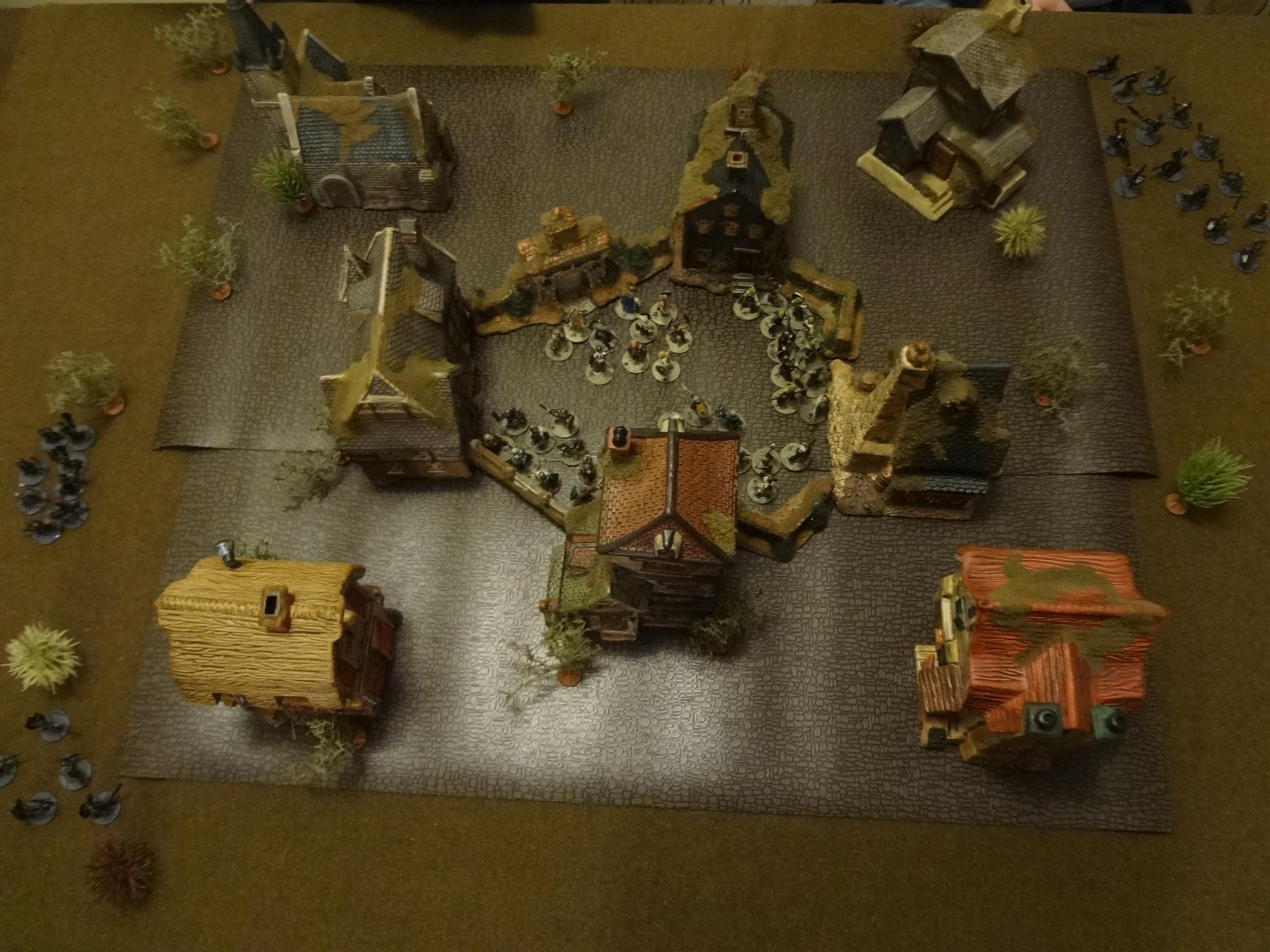

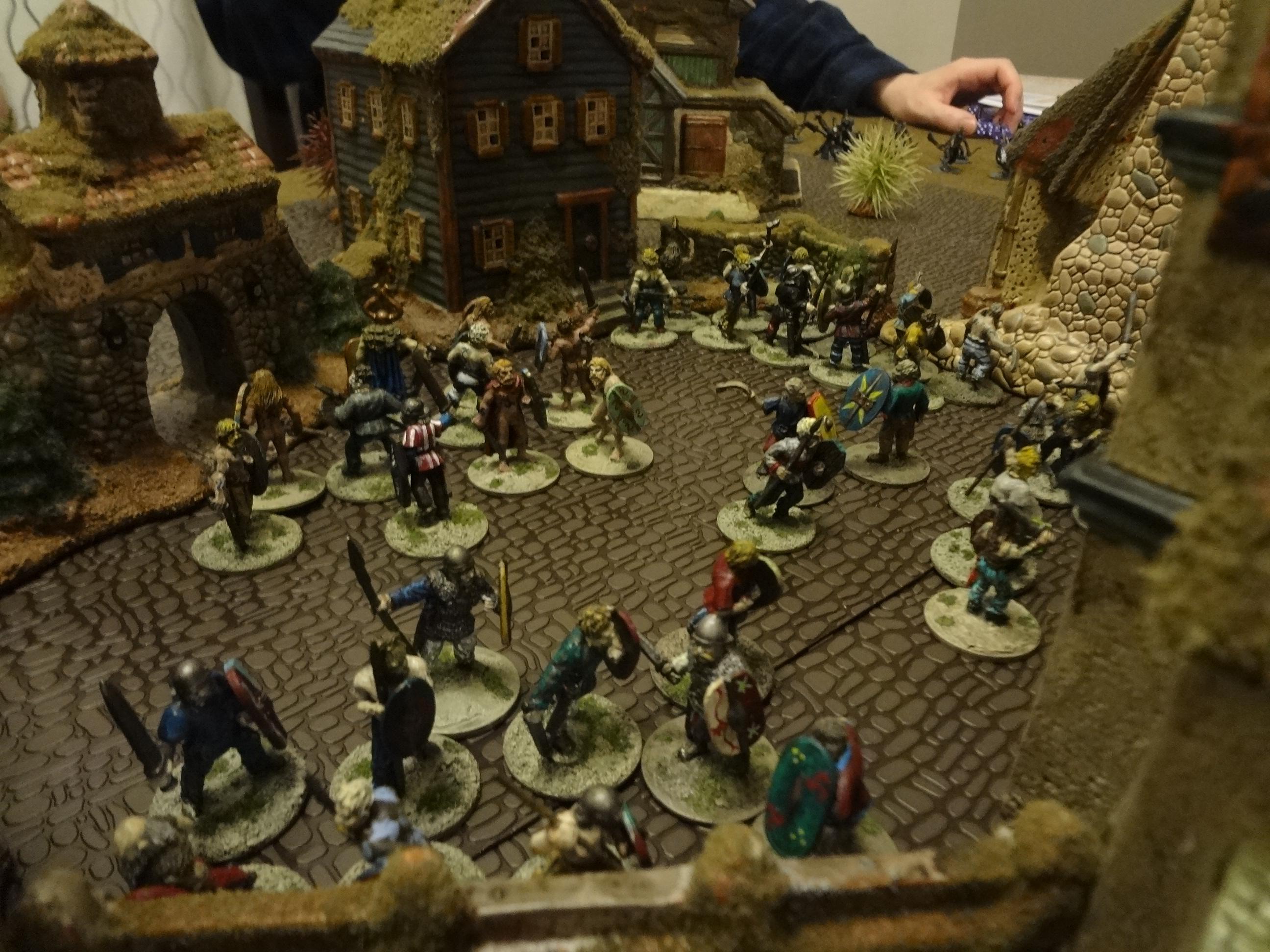

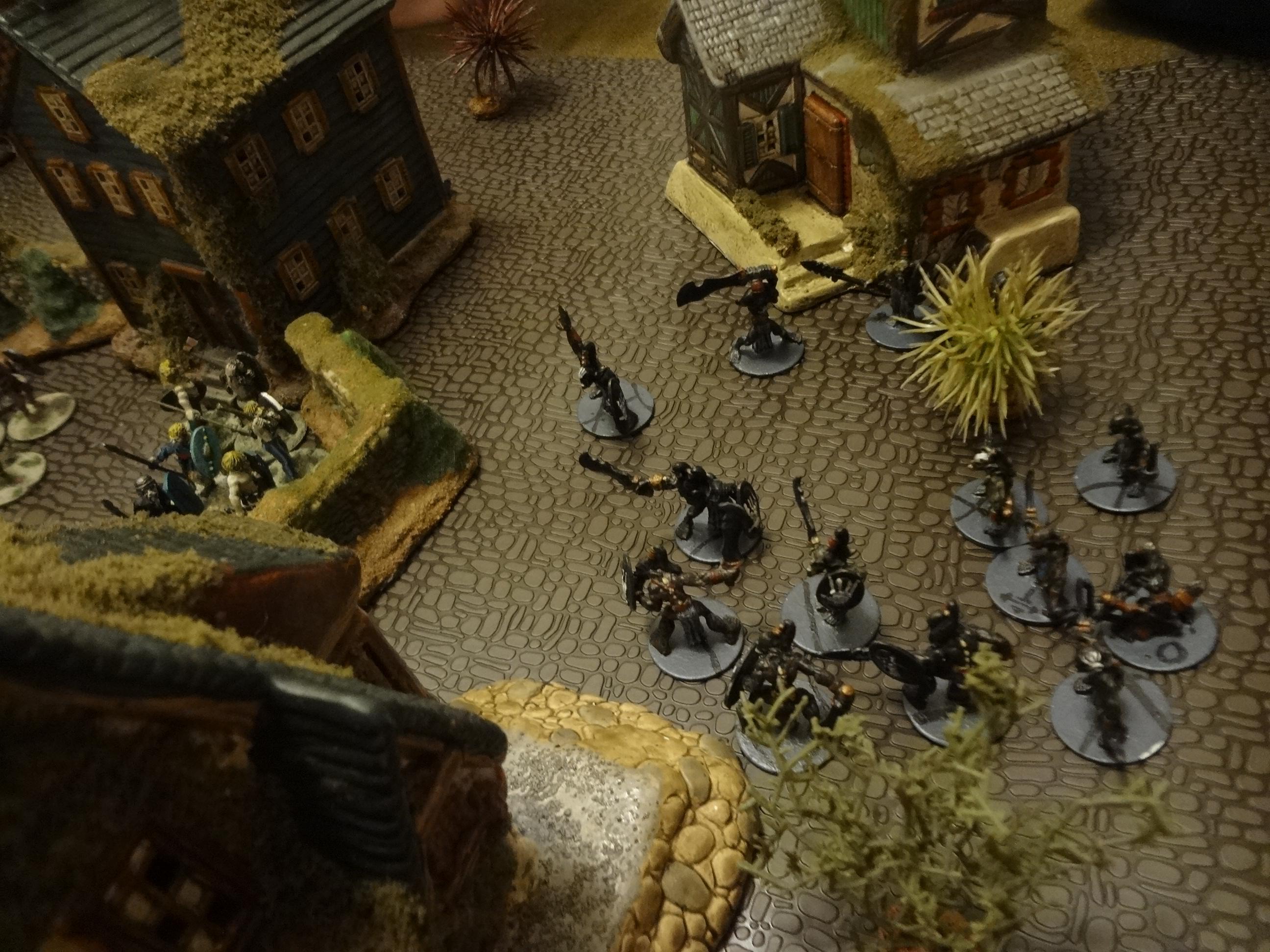
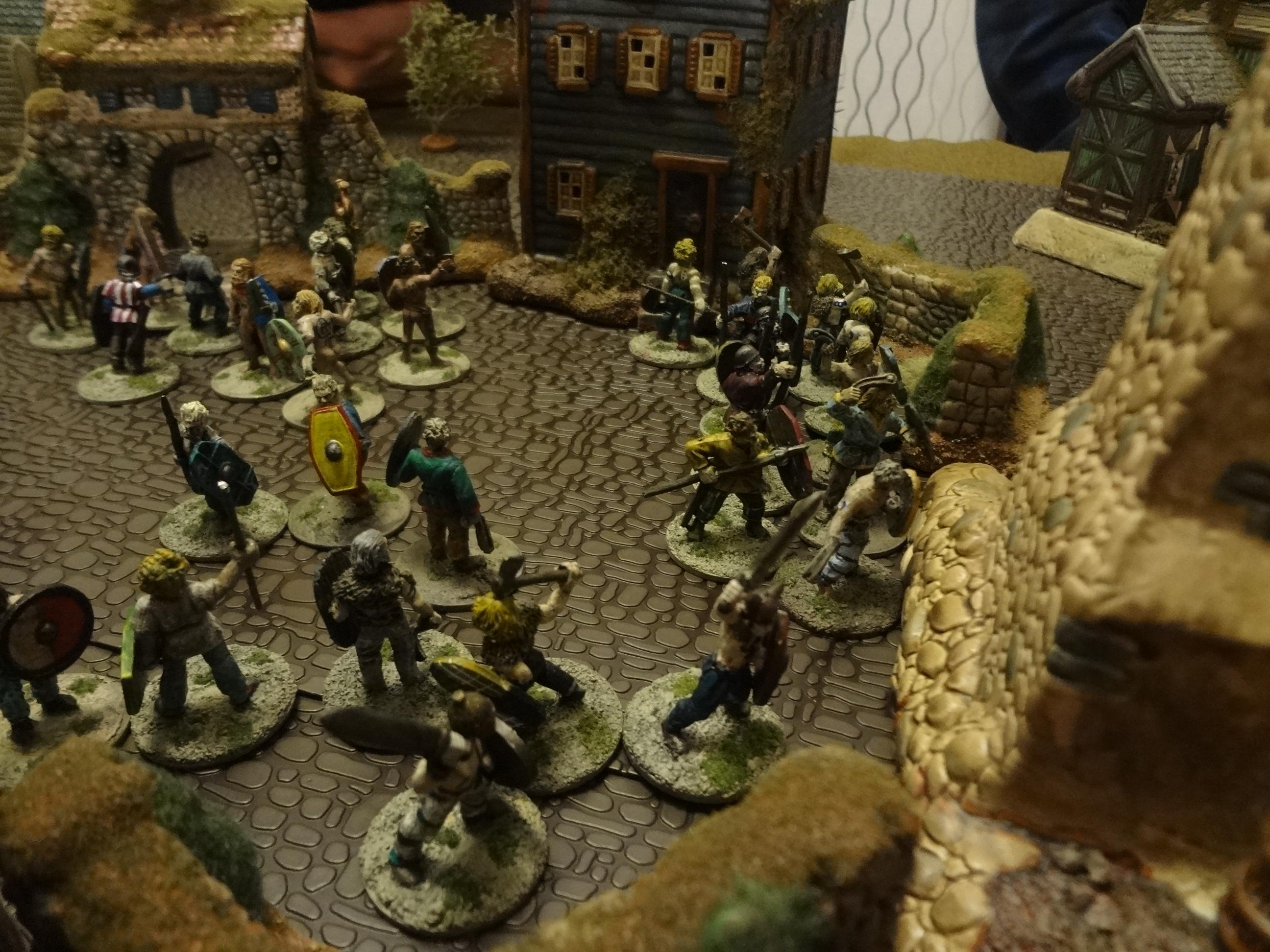
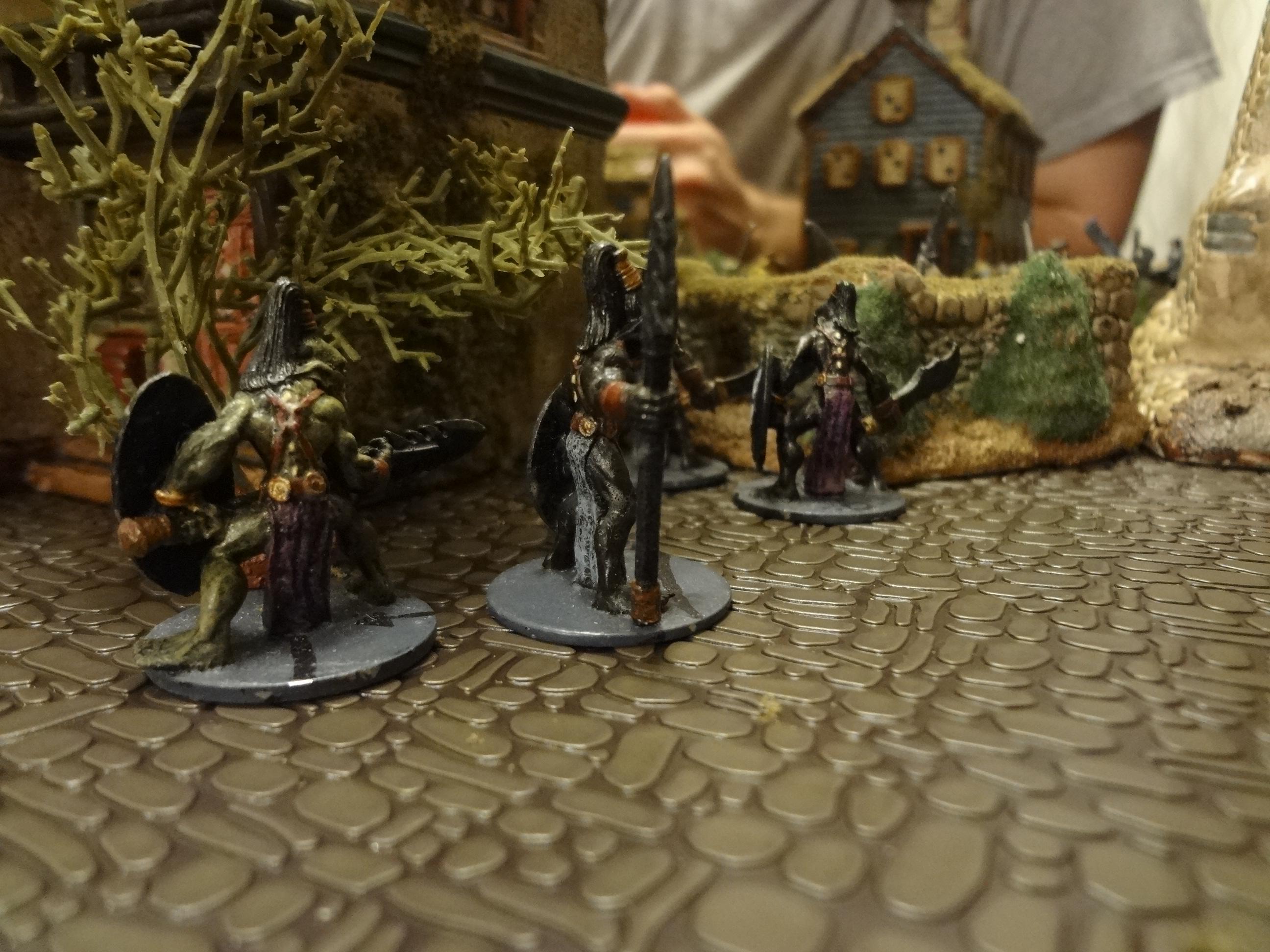
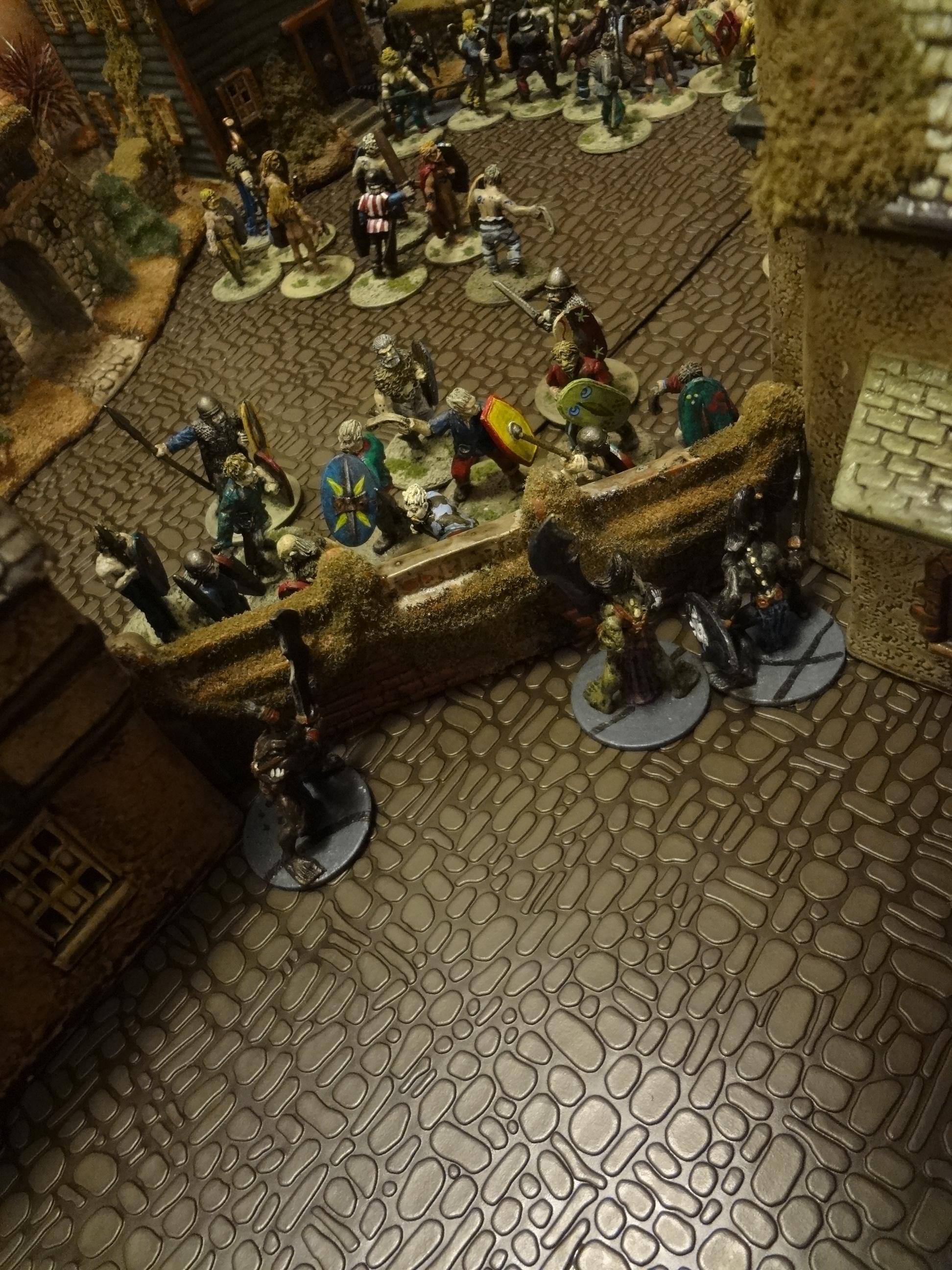
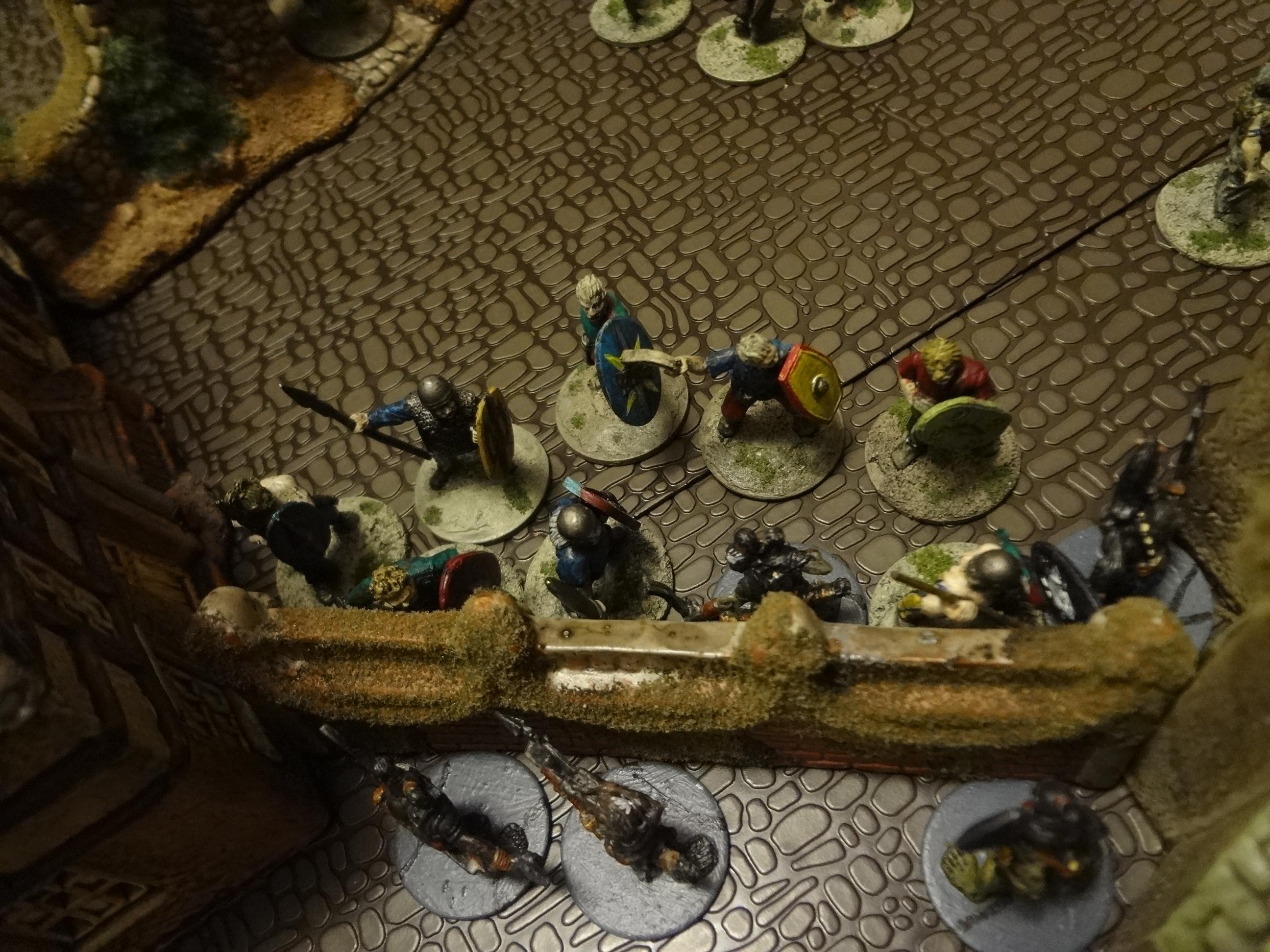
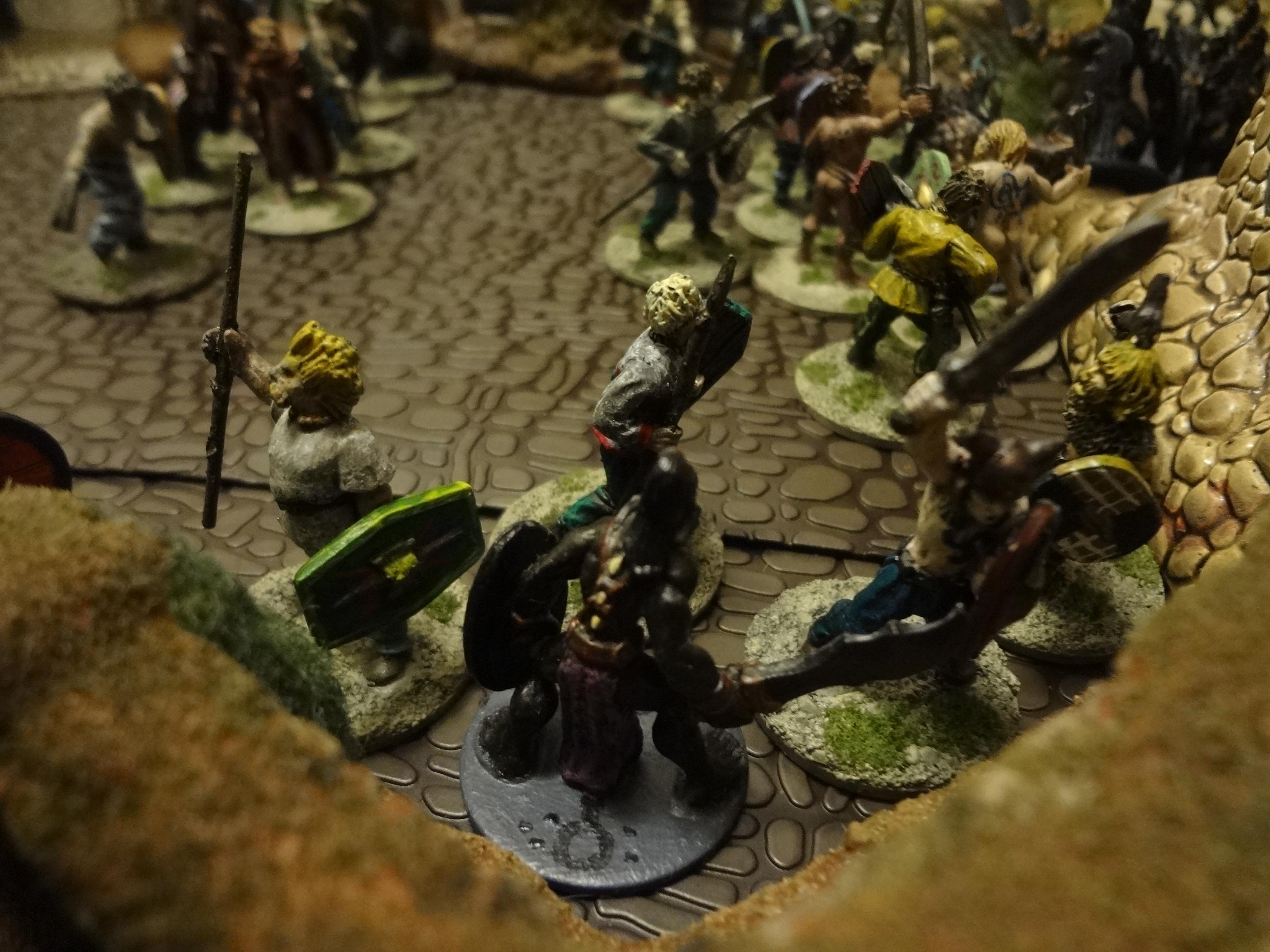
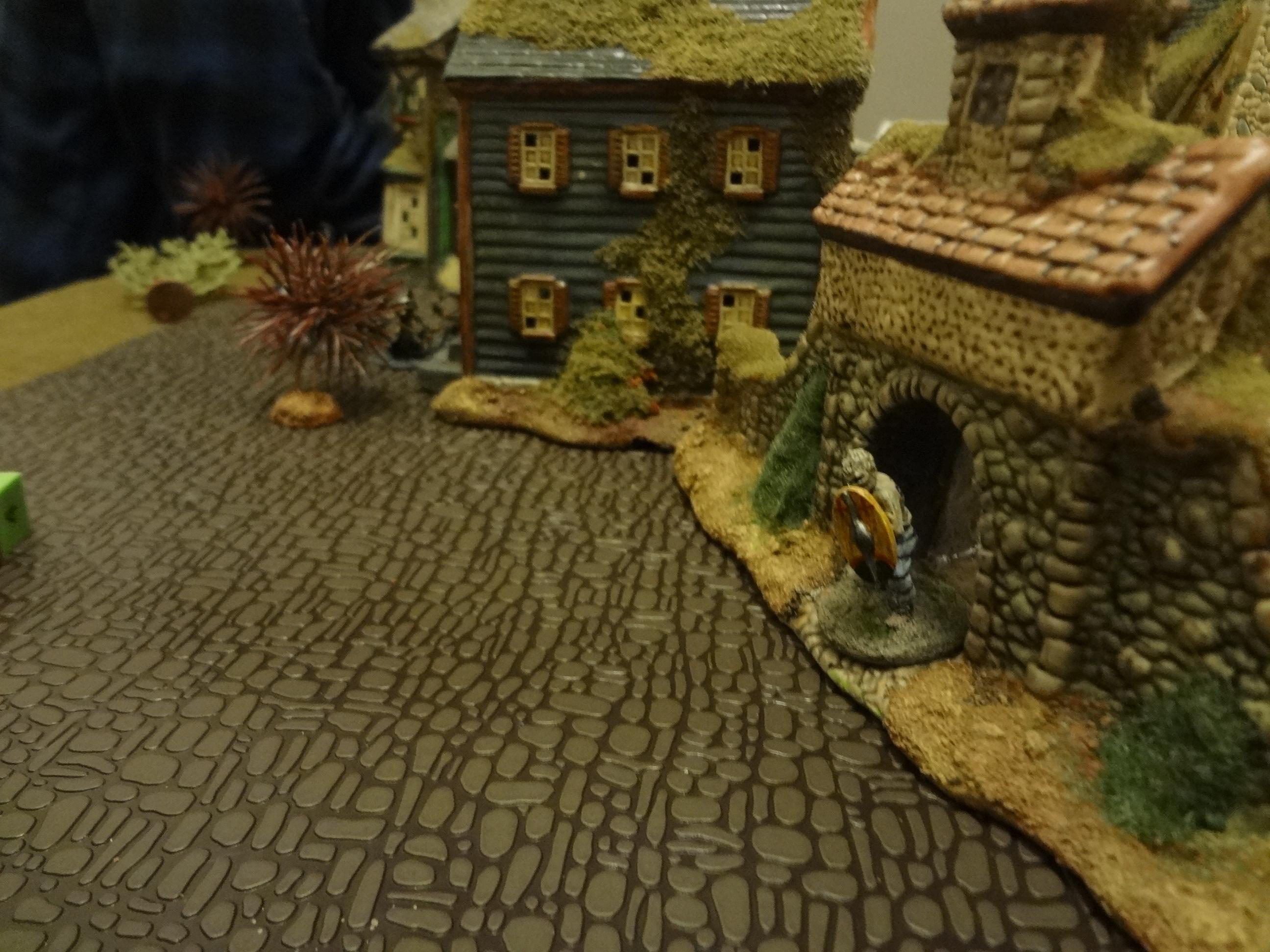
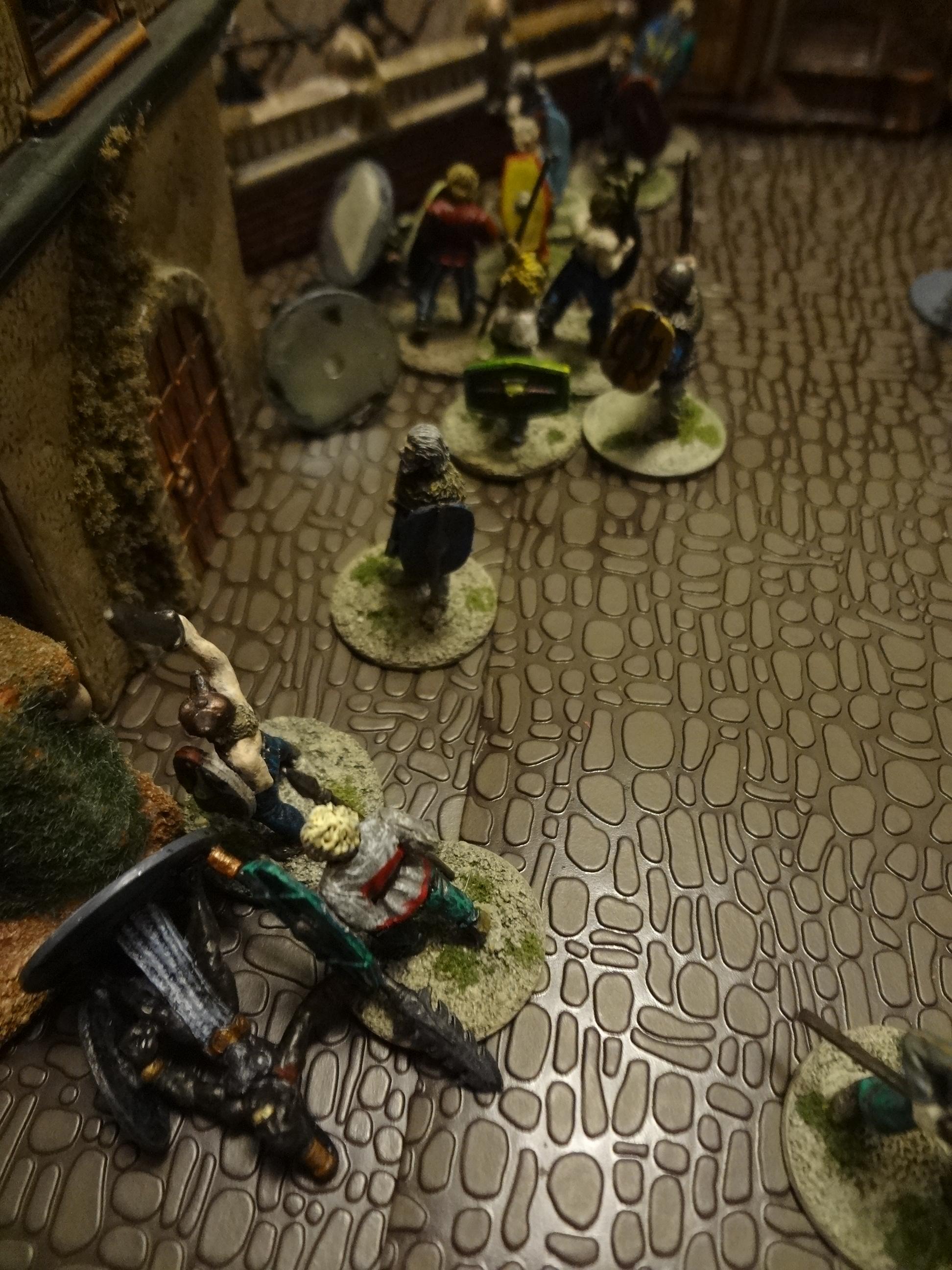
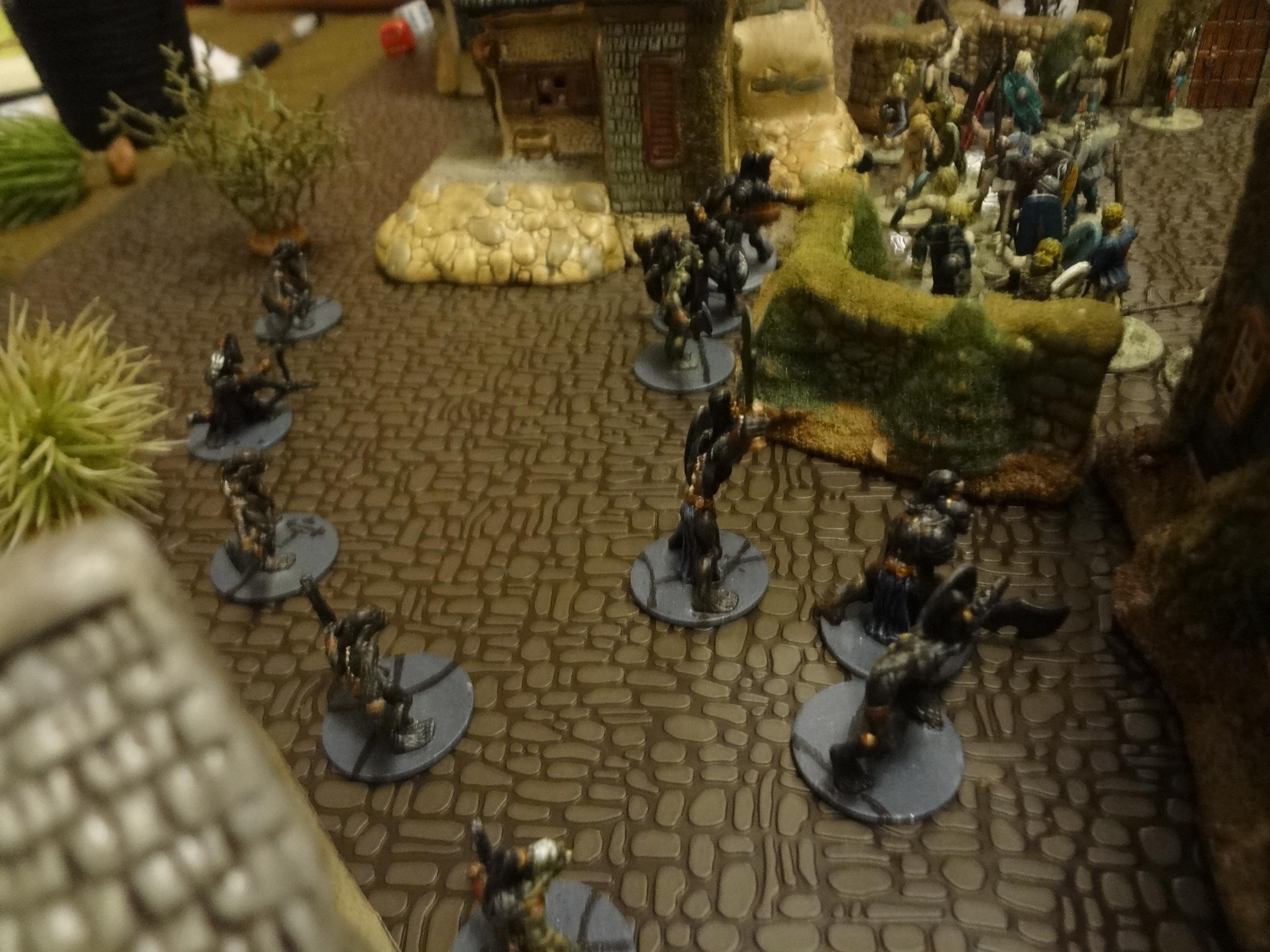
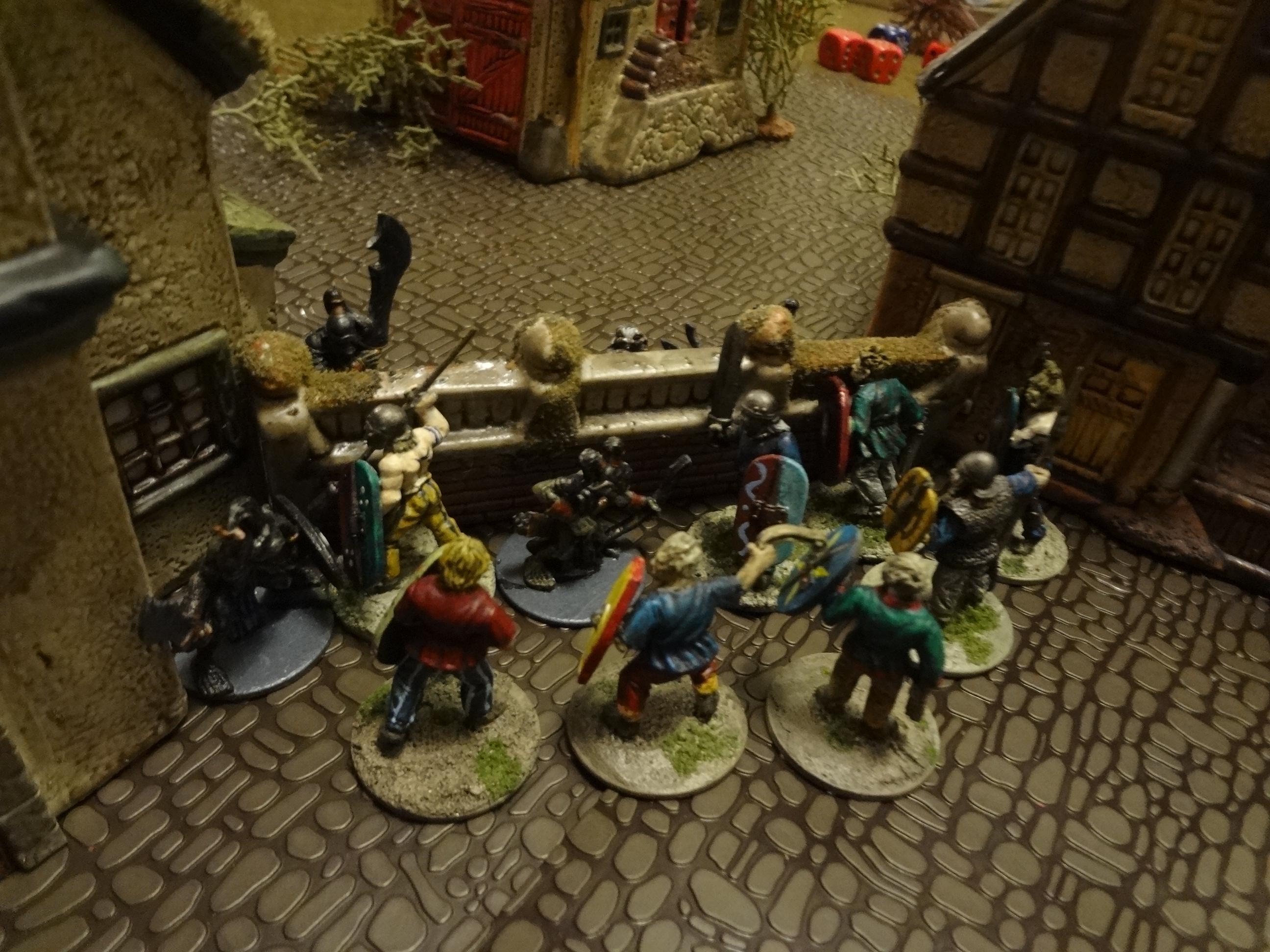
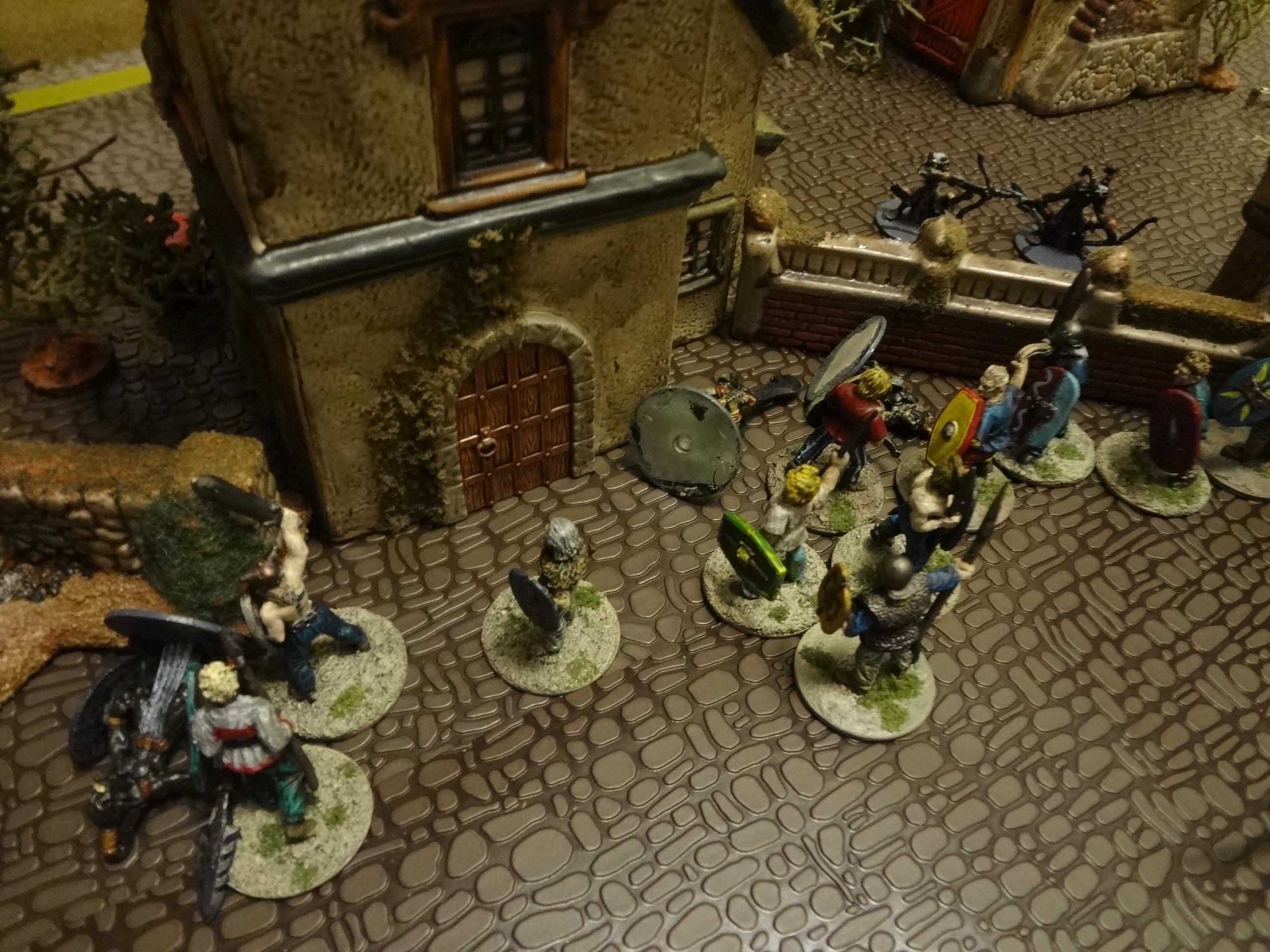
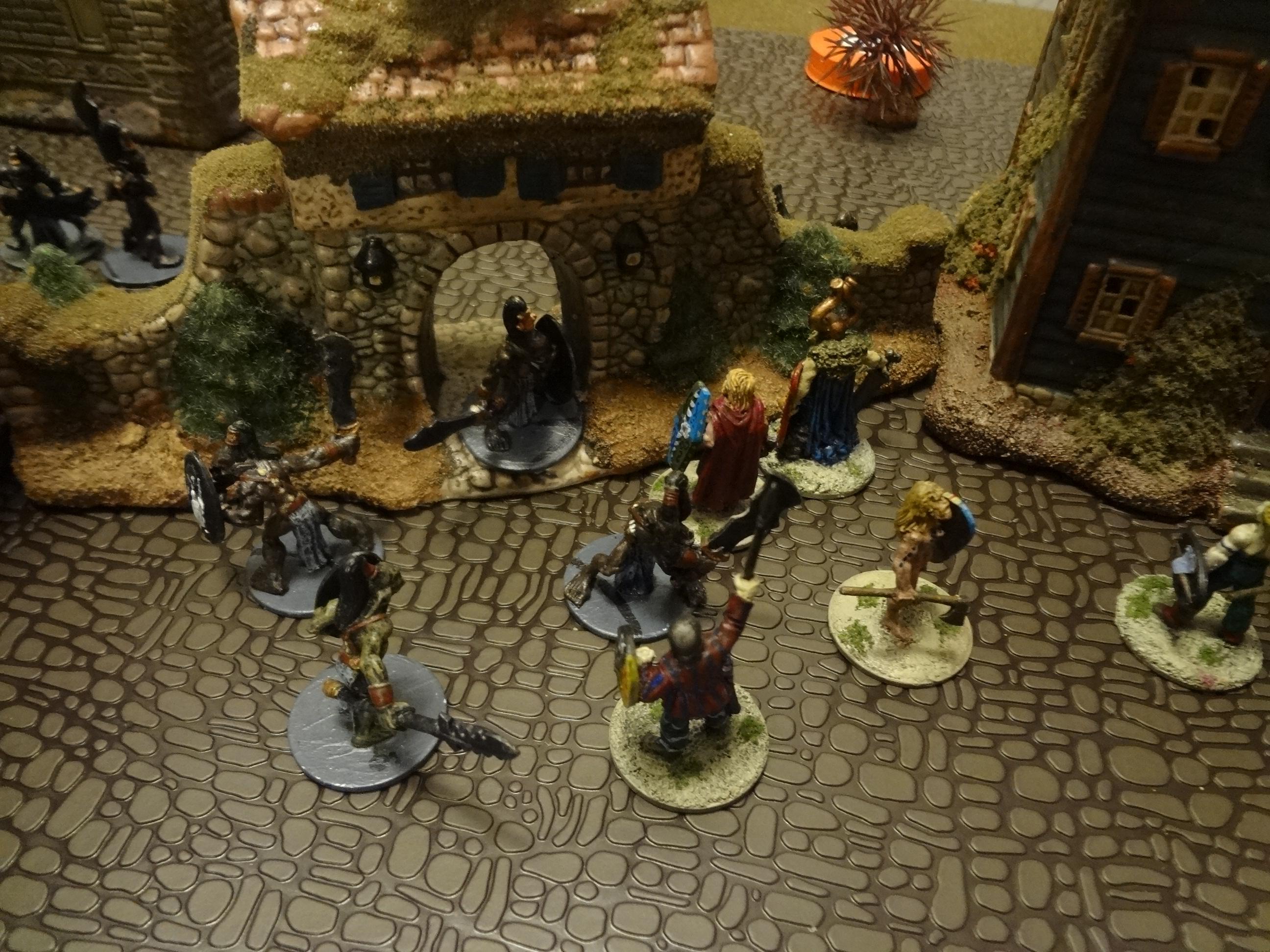
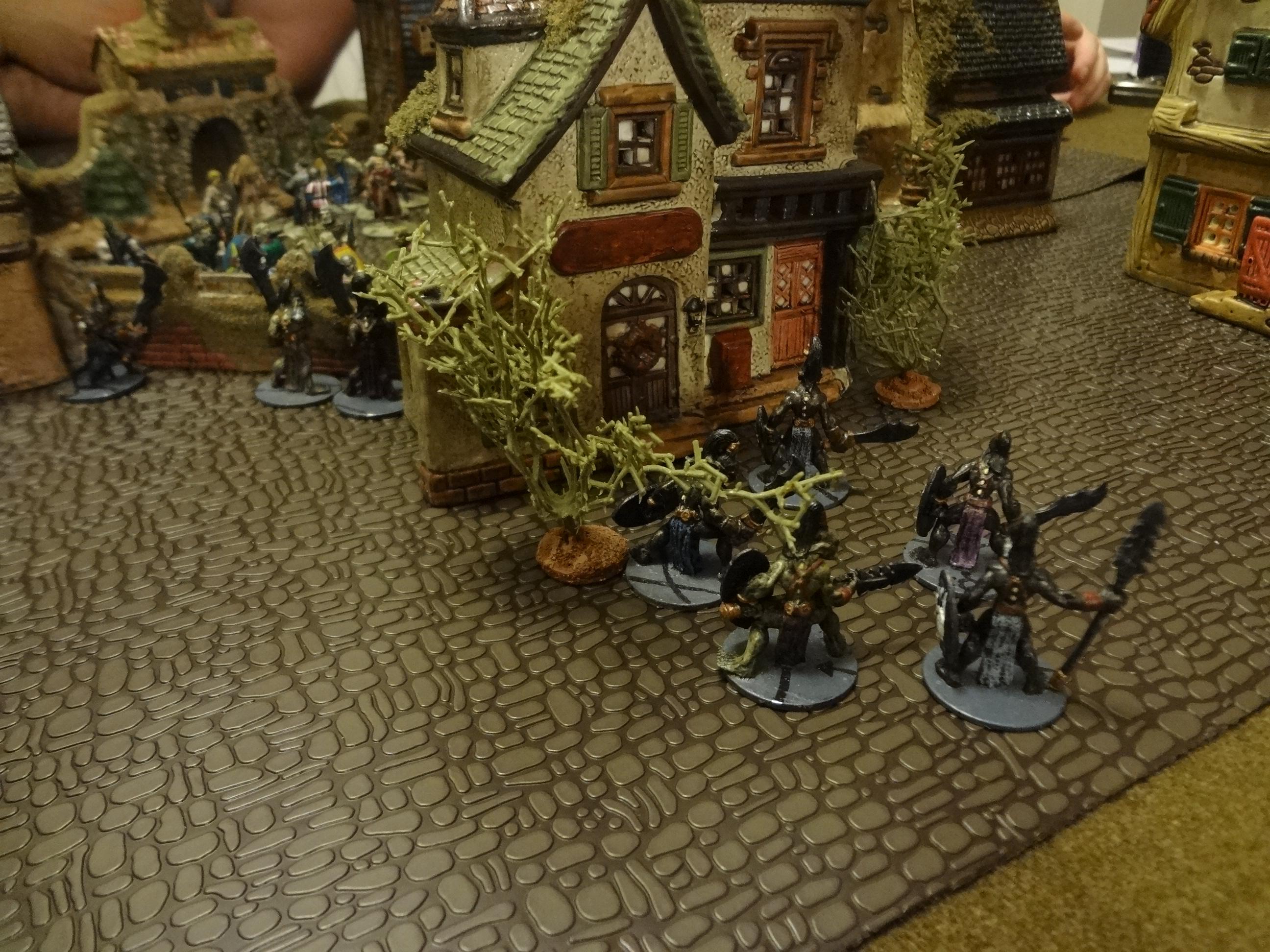
6 comments:
The SBG rules are one of my favorite sets - Sleek and elegant as you say, and with a great emphasis on maneuver and positioning. I'd definitely recommend adding heroes, as the use of these, and their Heroic Abilities, account for a great deal of the strategy in the game. I find that the game works best when each side has around 20-30 miniatures on the table as that allows for proper formations.
Though GW recommends 500 points, I find the game greatly enjoyable at around 150-200, with a couple of minor heroes per side (like the Captains), though another way to play the game is as a skirmish where each, or only one, side has only heroes.
Lastly - The game really benefits from a good scenario - but there are quite a few in the RotK rulebook, and also around online. I find that the game needs a clearly defined end point, or else it turns into a slog-match when the forces start to get thinned out. But that is true of most game-systems.
At some point, probably soon, I want to do a blog-post on the system, and how it can be used for generic fantasy, though I am somewhat distracted by Open Combat for the time being. :)
Sorry for the long ramble. I get excited - Hope to see you play this game a bit more, and look forward to hearing about your experiences.
We play Song of Blades & Heroes and LOTR. Of the two, LOTR provides a bigger game; SOBH is more warband level. Heroes definitely add an interesting dimension, particularly if you go with low level officer types. Heroes with points of more than 175 or so will have a major impact on the game. But we really enjoy them. It breaks down with over 60 figures per side IMHO.
Thanks for the advice, I think we'll be keeping our game sizes well under 60.
We're also avid SBH gamers (look for our upcoming 5th annual summer campaign…). I love SBH, but I am hoping that LoTR will scratch the platoon-level fantasy itch.
-Karl
Thanks for the advice and suggestions. I definitely hope to play this again soon. The scenarios are one of the main attractions for me. I don't see myself ever playing a generic kill-em-all game. I've picked up the Fellowship, 2 Towers and a couple of other sourcebooks just for the scenarios.
We've also enjoyed Open Combat, though it's more of a SBH size game. I'll be looking forward to reading your blog posts about both games.
-Karl
LOTR is my fantasy wargaming rules set of choice. Heroes are simultaneously powerful and vulnerable, one simple rule (the 'stand fast! rule) let's even the humblest hobbit or no-name lieutenant save the day, and one page of rules from 'Legends of the Old West' make it playable for larger scale battles...
Post a Comment
Note: Only a member of this blog may post a comment.